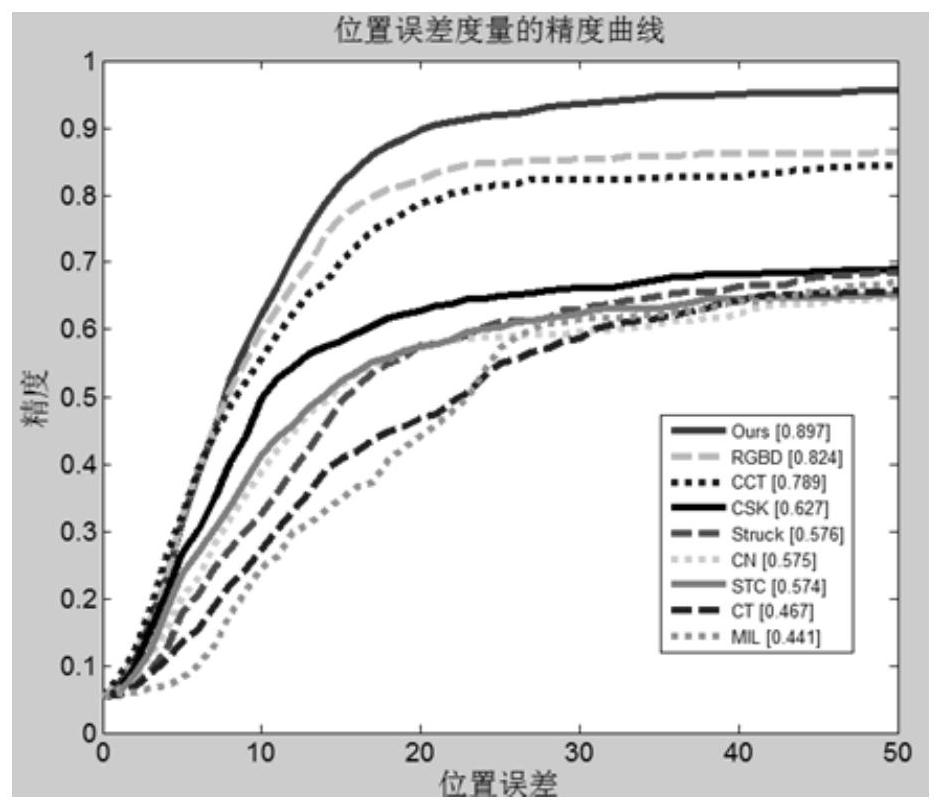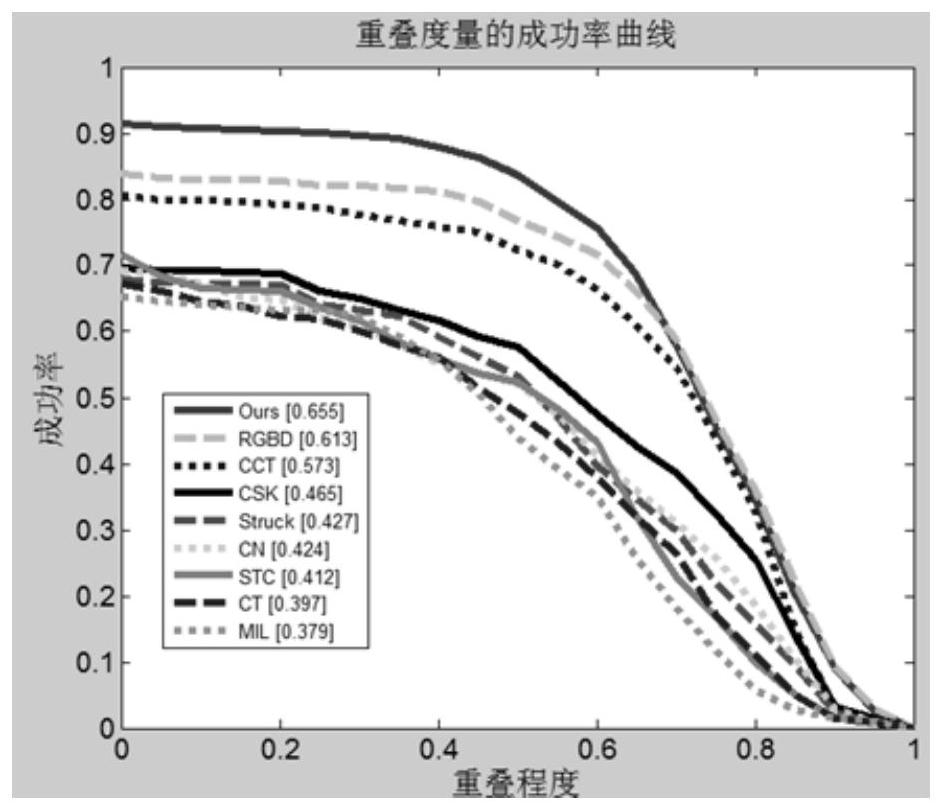Weight-associated target tracking algorithm based on depth map
A technology of target tracking and depth map, applied in the field of visual tracking, can solve the problem of not developing depth information to deal with occlusion, and achieve the effect of improving the effect of visual tracking
- Summary
- Abstract
- Description
- Claims
- Application Information
AI Technical Summary
Problems solved by technology
Method used
Image
Examples
Embodiment Construction
[0026] The following is a verification of the weight-associated target tracking algorithm based on the depth map proposed by the patent. Experimental results are presented in the form of accuracy plots for the position error metric and success rate plots for the overlap metric.
[0027] To quantitatively compare these tracking algorithms, figure 1 A subjective comparison is shown. From figure 1 It can be seen that the proposed algorithm has the smallest error compared with other algorithms and can track the target more accurately. There are some algorithms that lose track of the target after encountering the occlusion problem, however the proposed algorithm can solve the occlusion problem well. In addition, the proposed algorithm can obtain the most accurate object bounding box compared with other algorithms, because it adopts a more accurate scale update mechanism and an adaptive classifier update mechanism.
[0028] figure 2 Two evaluation criteria are used to evaluate...
PUM
 Login to View More
Login to View More Abstract
Description
Claims
Application Information
 Login to View More
Login to View More - R&D
- Intellectual Property
- Life Sciences
- Materials
- Tech Scout
- Unparalleled Data Quality
- Higher Quality Content
- 60% Fewer Hallucinations
Browse by: Latest US Patents, China's latest patents, Technical Efficacy Thesaurus, Application Domain, Technology Topic, Popular Technical Reports.
© 2025 PatSnap. All rights reserved.Legal|Privacy policy|Modern Slavery Act Transparency Statement|Sitemap|About US| Contact US: help@patsnap.com



